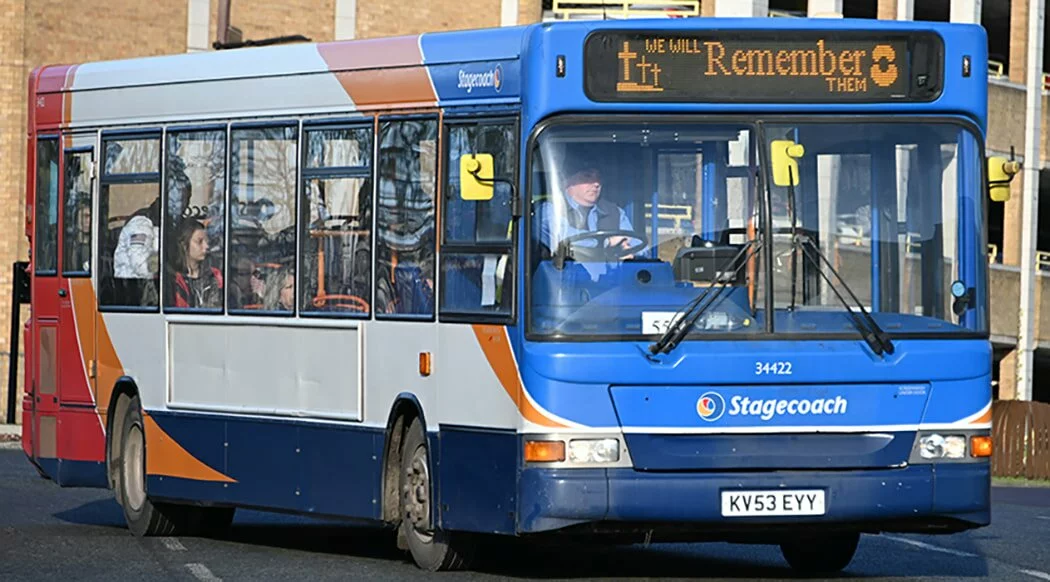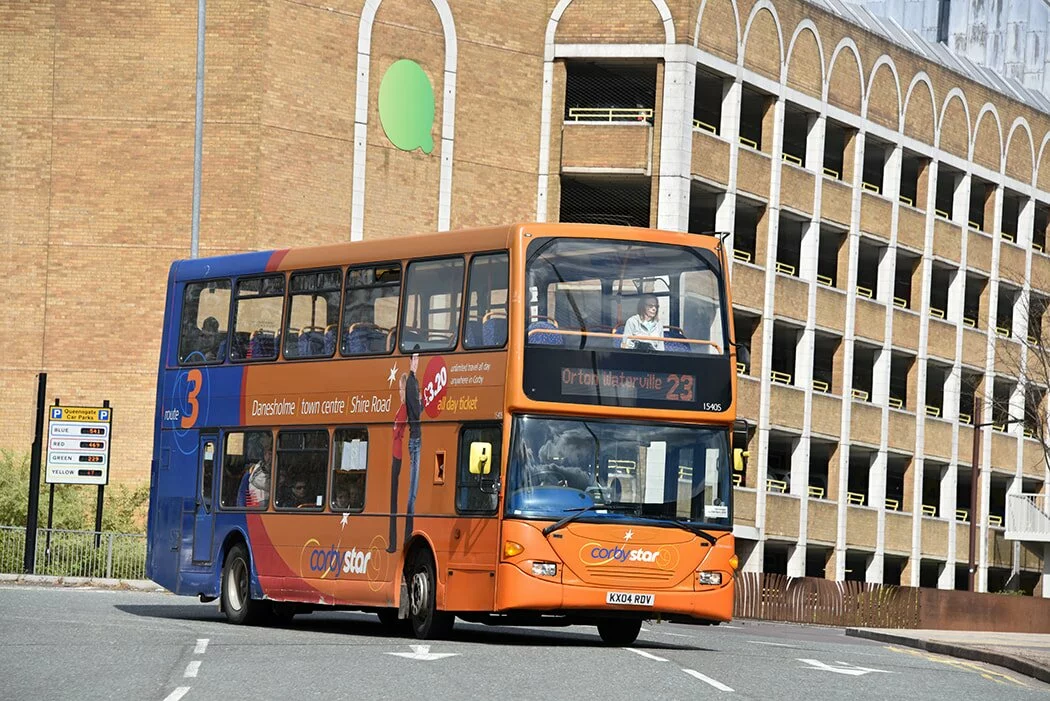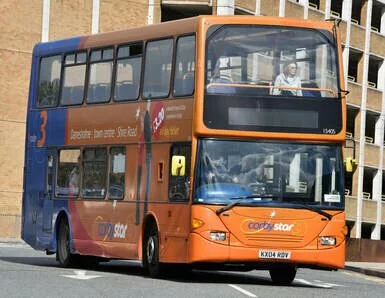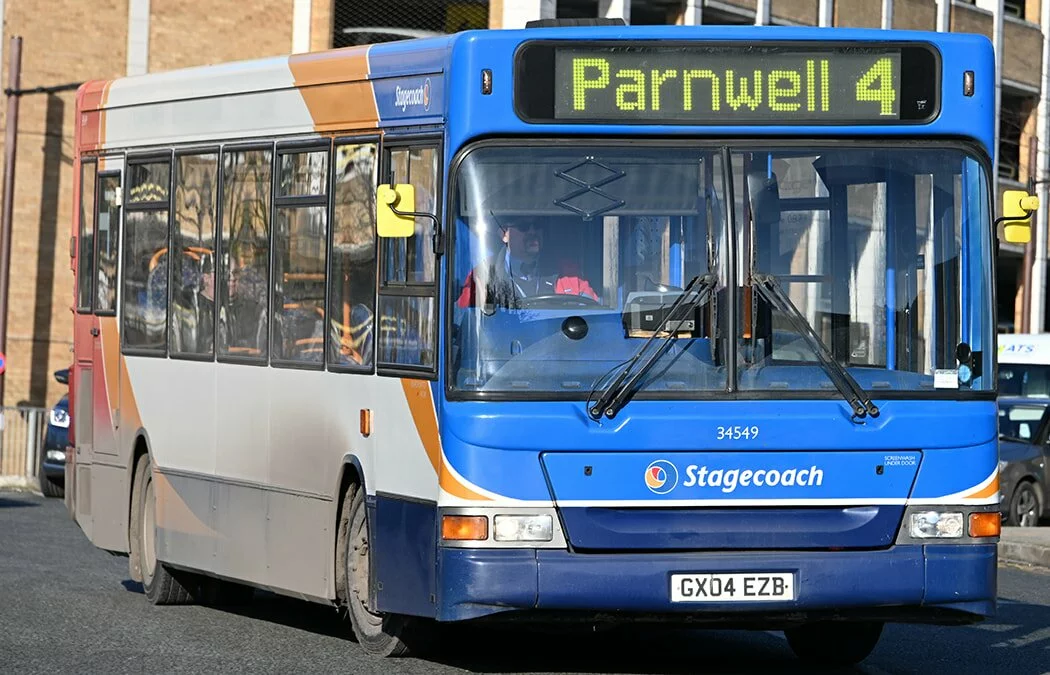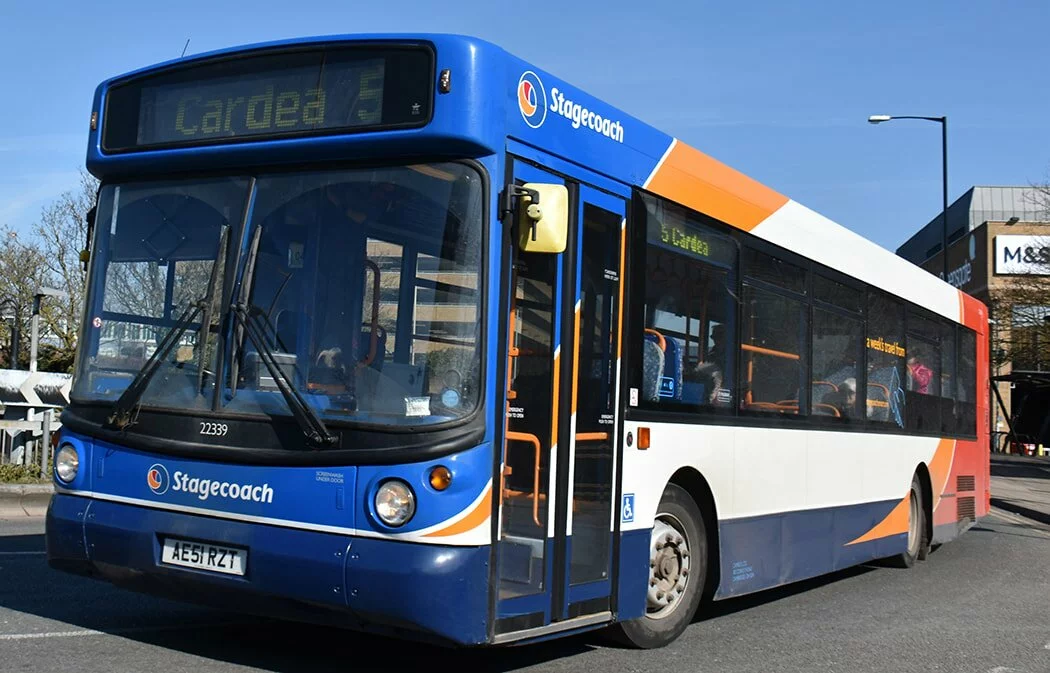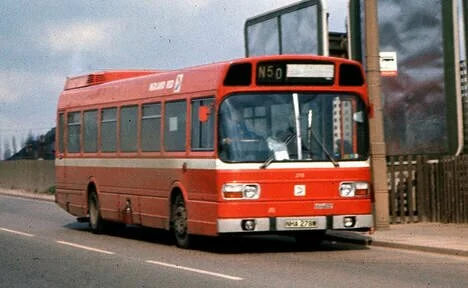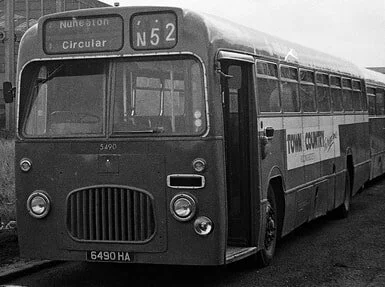The right destination10/2/2020 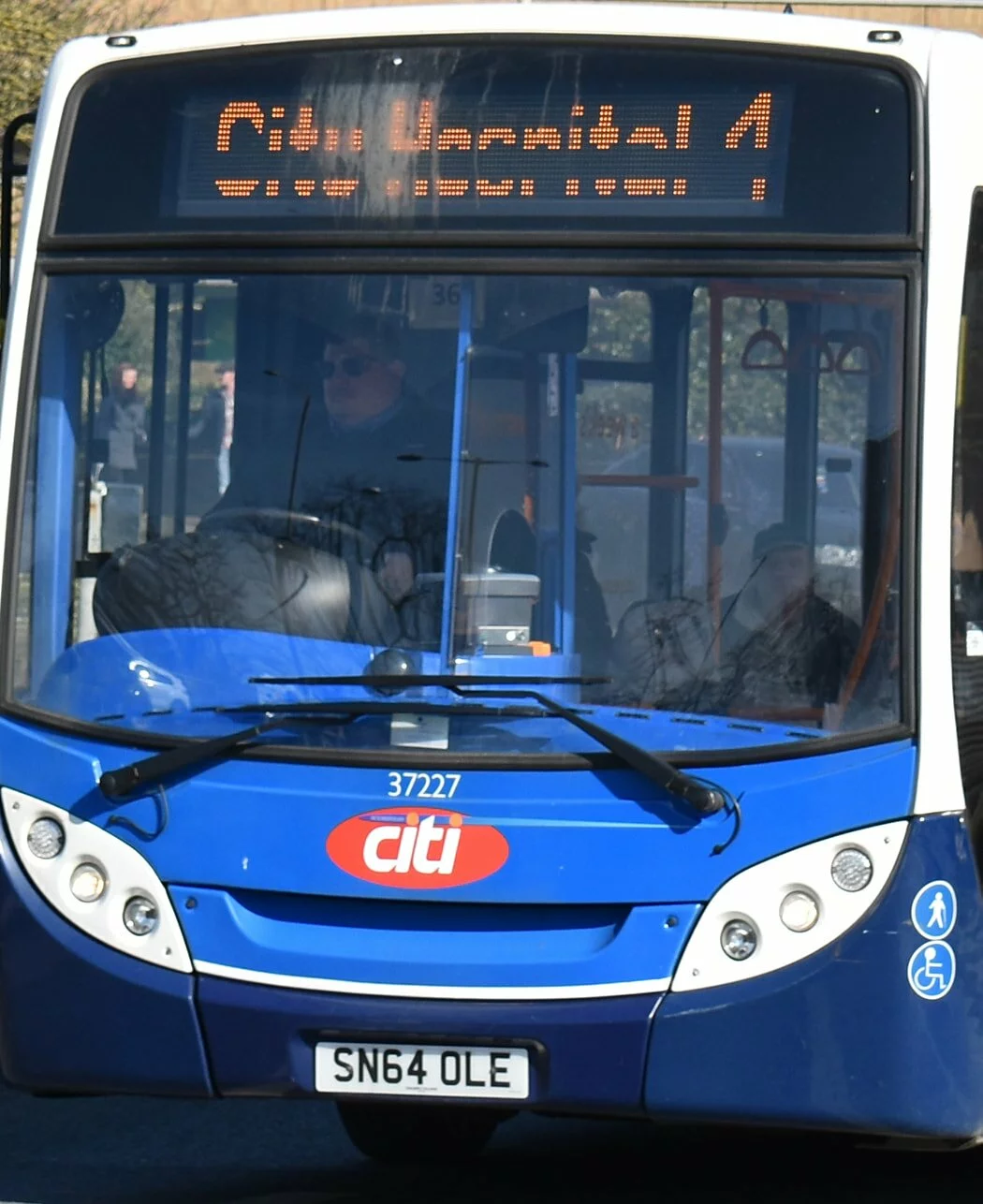 Worse than a black screen in our view is the image that captures the destination display during mid-refresh. We would rarely use an image like this. ©Steven Knight Media. Worse than a black screen in our view is the image that captures the destination display during mid-refresh. We would rarely use an image like this. ©Steven Knight Media.
One of the most frequent questions we get asked is how we manage to capture a full destination display on the vehicles that we photograph. The answer is simple, we have no problems where buses are parked up or have been posed for us. Moving vehicles are another issue.
Modern electronic displays operate on a frequency which causes then to ‘refresh’. The more times a second they refresh the better the perceived sharpness of the image. However, the naked eye cannot discern the refreshing of the destination screen as it happens too quickly. The result can easily be a blank display or a display that has a horizontal band across it at either the top, middle or bottom of the display. When looking through an SLR camera the view is projected into the viewfinder by mirrors so the image is seen by the naked eye just as it would be if you were looking at it. Using phone cameras and also cameras with LCD displays and SLR-style cameras with the ‘Bridge’ format, the user is effectively looking at the image as it appears on the sensor that will capture the image. The result is an image where the LED display can be seen flashing. To get a good image of a stationery, or specifically posed, vehicle we would tend to use shutter speeds of between 1/30 and 1/90 - or even push it to 1/125 - safe in the knowledge that we will get a good shot.
For moving vehicles we have the same problems as most bus photographers. We need to use a fast shutter speed to freeze any movement, but we know the captured images will be affected by the refresh rate of the destination screens.
Assuming the camera or phone camera we are using has a buffer to store and save images whilst others are being taken, our chosen shutter speeds here are 1/500 or 1/640 and we set the camera to take multiple images. That way we can generally be sure that one of them will have a readable display. It doesn’t work every time but we find it works 90% of the time. However, even we know how annoying it can be when attempting a photograph because of the destination on the bus and none of them coming out.
So what about the predecessor of the LED display, the green ‘flip dot’ displays. These were easy to capture as they had a fixed display once set. However, whilst they were easy to read and photograph - when new and in their early years of fitment they suffered from fading in the bright sunlight and also attracted dust. By the end of a vehicle’s life some of them were barely readable.
We must make a confession here, capturing perfect destinations has been challenging even in the days of roller blinds. Especially when lazy drivers and conductors failed to take any care when changing the display. And, hands up, we have in the past been that lazy person but my defence is when standing on the front radiator cover steps of a double deck my view of the destination blind is slightly different from what passengers would see when waiting at the bus stop.
Likewise many double decks when configured for one man operation had a sight glass and a series of mirrors for the driver to see what destination he was setting. An extremely difficult operation unless you were able to see the reflection of the front of the bus in a bus in front or a shop window! Then there was ultimate lazy - rather than keep changing the display during a shift just set it to ‘Service’ or the catch-all ‘Town Service’. 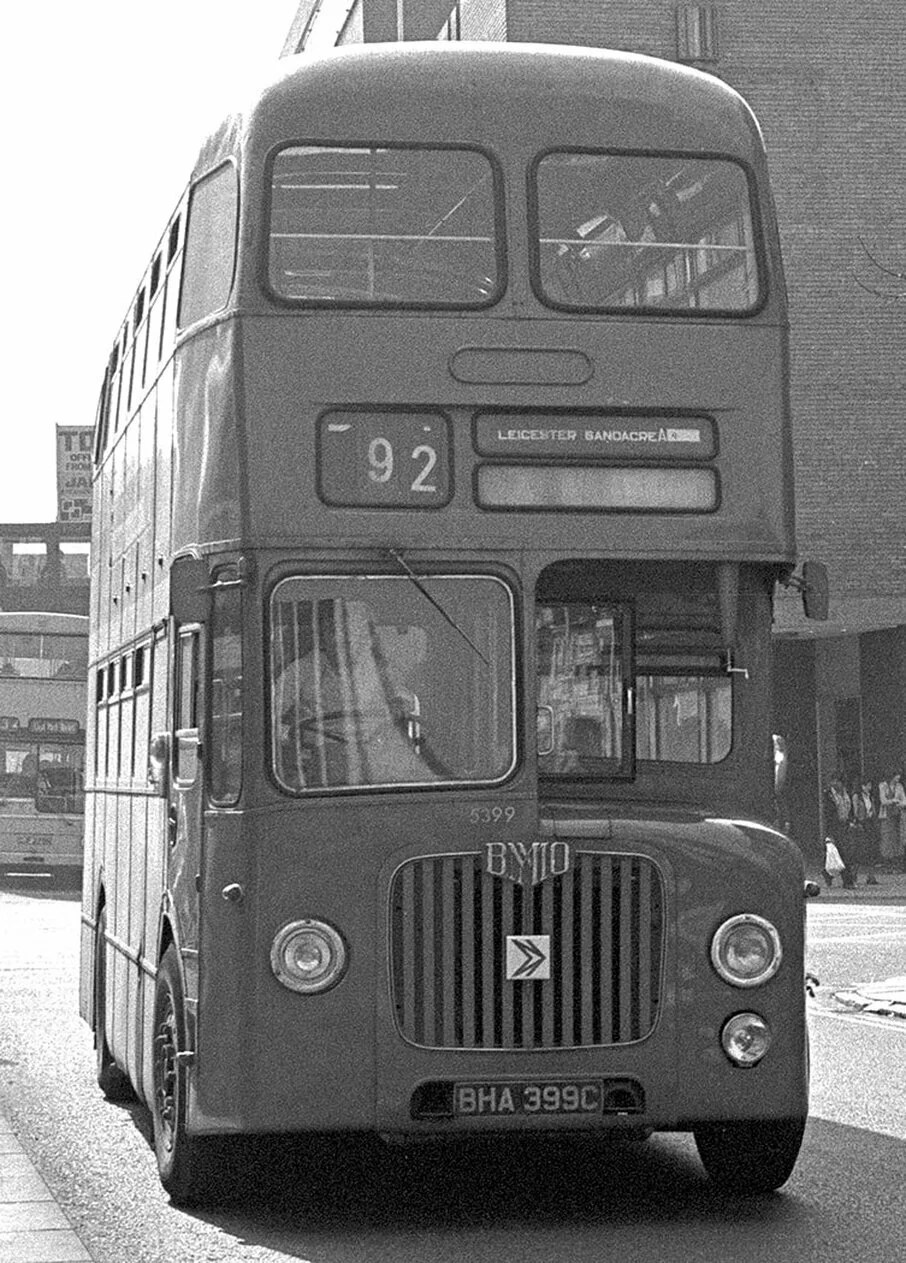
Ignoring the poorly aligned number blinds the Leicester destination may indeed be correct but what is on display is from the extreme end of the blind. ‘Leicester Sandacre A’ denotes it’s a destination blind for Midland Red’s Sandacre depot in Leicester. The ‘A’ denotes it is the ‘ultimate’ blind. © Steven Knight Media.
Comments are closed.
|
- Home Page
- About SKM
- Fleet Updates
- Fleet News Ramblings
- Press Releases
- The Steven Knight Media Blog
- Our Books
- Contact us
- Home Page
- About SKM
- Fleet Updates
- Fleet News Ramblings
- Press Releases
- The Steven Knight Media Blog
- Our Books
- Contact us

